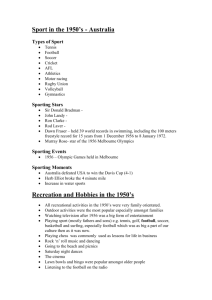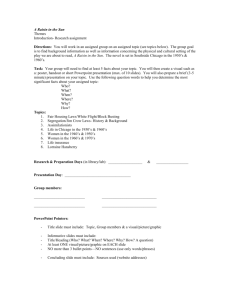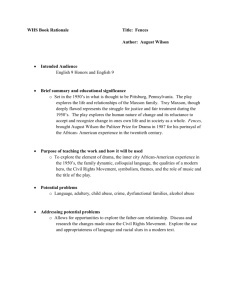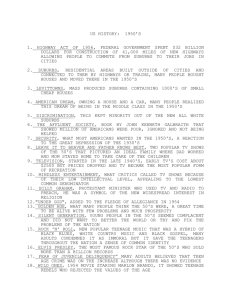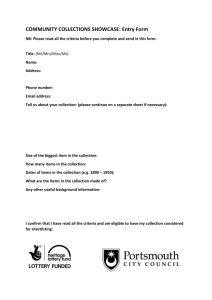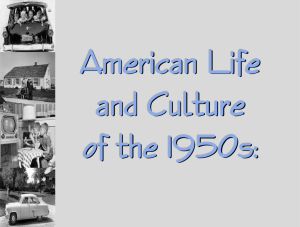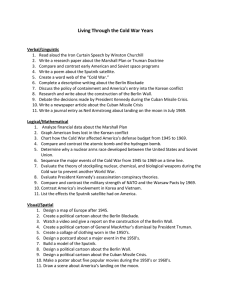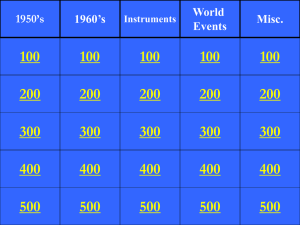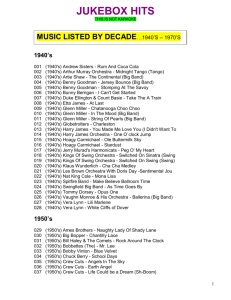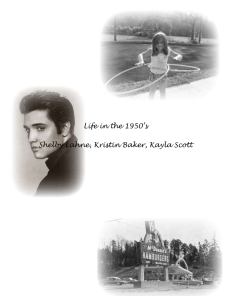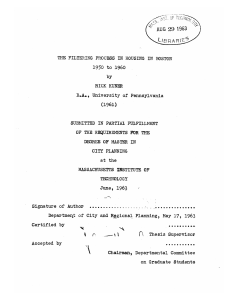Seeds of the Sixties
advertisement
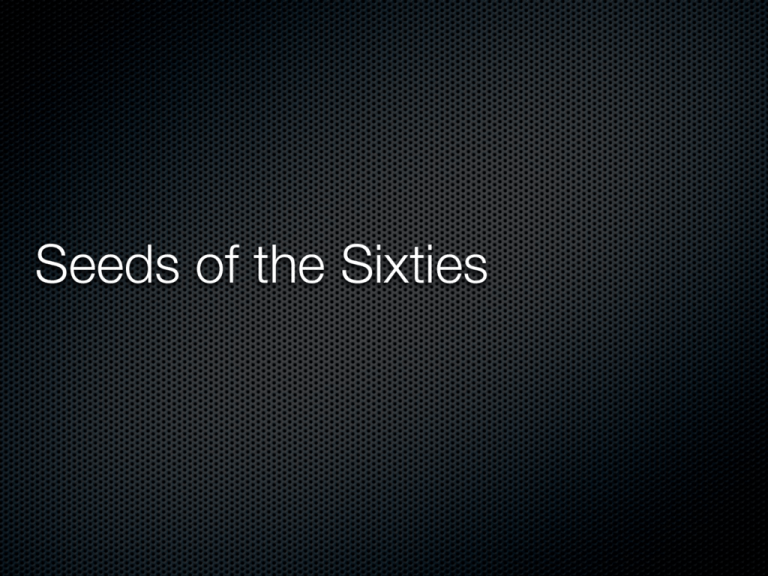
Seeds of the Sixties Characteristics of the 1950’s Prosperity and Poverty: In 1960, 5% of the population owned over 50% of the assets and 25% lived at or below the poverty line. Educational Opportunities: The GI Bill of 1945. Women in the workforce: Although the percent of married women working slowly increased, many left nontraditional jobs. Most worked as secretaries, stewardesses, nurses, or teachers. Characteristics of the 1950’s Civil Rights: Brown v. the Board of Education of Topeka, Kansas (1954) Demographics: Population shifted tot he suburbs. For the first time in 1960 the majority of Americans owned the home in which they lived. Television: Why Johnny Can’t Read (1955). By 1953, 50% of American homes had a TV; by 1960, 90% did. Characteristics of the 1950’s Baby boom: Over 4 million babies born each year from 1946-1960. Increased idealization of youth. Automobile culture: National System of Defense Highways Act (1956) built interstate system. Conformity: The Lonely Crowd (1950), The Man in the Gray Flannel Suit (1956), The Hidden Persuaders (1957). Rock and Roll: Allan Freed’s Moondog’s Rock ‘n Roll Party goes on the air in 1952. Behavioral Rules of 1950’s People: William Levitt After World War II Federal mortgage guarantees through Federal Housing Administration and the Veterans Administration helped housing starts increase from 114,000 in 1944 to 1.7 million in 1950 Levittown was begun in 1947. At the peak of construction, a new home was completed each 16 minutes. In 1960, not one homeowner in Levittown was African-American. People: Dr. Benjamin Spock Spock’s Baby and Child Care (1946) sold 40 million copies by 1960. The previous most popular child care book was Dr. John Watson’s Pschological Care of Infant and Child (1928): “Never, never kiss your child. Never hold it on your lap. Never rock its carriage.” Dr. Spock’s advice was different: “Every time you pick your baby up, even if you do a bit awkwardly at first, every time you change him, bathe him, feed him, smile at him, he’s getting the feeling that he belongs to you and you belong to him.” People: J. D. Salinger The Catcher in the Rye (1951) sold 12 million copies in the 1950’s and has to date sold over 65 million copies. Despite controversy over its “obscene” language, in 1981 it was both the most censored book and the second most frequently taught book in American high schools. “I’m sort of glad they got the atomic bomb invented. If there’s ever another war, I’m going to sit right the hell on top of it. I’ll volunteer for it, I swear to God I will.” People: William Gaines In 1953 Bill Gaines took over a family publishing business and began to publish comic books like Tales from the Crypt and Crime Suspense Stories that featured graphic violence. Congressional hearings into the influence of comic books led to the comic book code that banned such words as “crime, horror, terror, and weird” from titles. Gaines decided to produce a “magazine” that would not be covered by the code and started publishing Mad magazine. In 1954 Big Mama Thornton had an R&B hit with the Stoller, Lieber, King song “Hound Dog” In 1956 Elvis Presley covered the song and sold millions. Presley’s 1956 recording of “Heartbreak Hotel” was the first great crossover hit, reaching #1 on the pop and country charts and #5 on the rhythm and blues chart.


